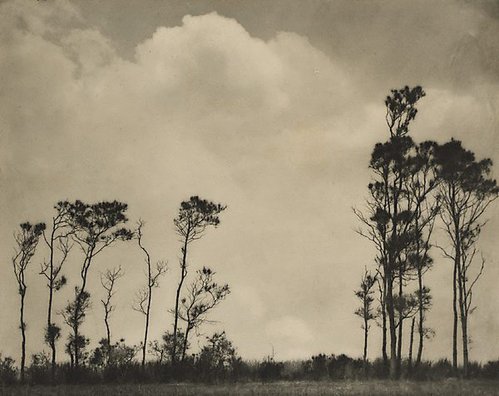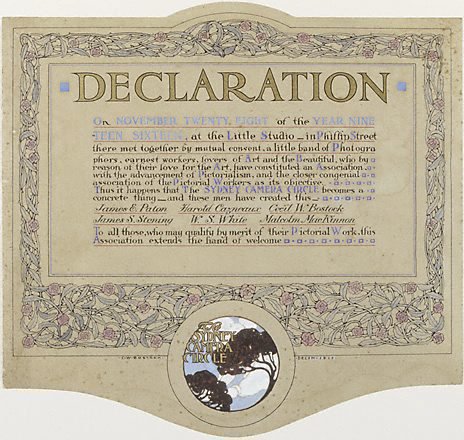-
Details
- Date
- 1917
- Media category
- Photograph
- Materials used
- portfolio of 10 gelatin silver photographs
- Edition
- 18/25
- Dimensions
-
44.4 x 31.5 x 1.2 cm closed; 44.4 x 63.0 cm open
:
a - cover label, 7.5 x 10.9 cm, image/sheet
b - The city’s highway, 14.3 x 18.9 cm, image/sheet
c - The byeway, 15.4 x 7.5 cm, image/sheet
d - A decoration, 19.4 x 12.8 cm, image/sheet
e - The ti-trees, 13.4 x 19.5 cm, image/sheet
f - The winding road, 10.7 x 11.2 cm, image/sheet
g - Nude study, 15.7 x 11.2 cm, image/sheet
h - Landscape, Ryde, 15.5 x 20.5 cm, image/sheet
i - Gone are the days, 15.6 x 20.2 cm, image/sheet
j - Eventide, 10.9 x 19.7 cm, image/sheet
k - Guardians of the road, 15.5 x 20.5 cm, image/sheet
- Signature & date
Signed and dated card u.c. verso leaf a, ink/pencil "... Cecil W. Bostock 1917".
- Credit
- Gift of Lea and Hilton Cannon 2012
- Location
- Not on display
- Accession number
- 123.2012.a-k
- Artist information
-
Cecil Bostock
Works in the collection
- Share
-
-
About
‘…you may judge for yourself without any degree of super-intelligence that the individuality of the camera is not always the same.’ C W Bostock 1
It is not known exactly when Cecil Bostock began to actively take photographs. Trained as a commercial artist at the turn of the century he was already very involved in Sydney’s photography scene by 1916, becoming one of the founding members of the Sydney Camera Circle. After three years of active military service in Europe, Bostock returned to Australia in 1920, opening a commercial studio in Sydney shortly thereafter. It specialised in advertising and industrial images for illustrated magazines such as ‘The Home’. Unfortunately much of Bostock’s output was sold and dispersed after his death. Although little of his work survives, it is known that Bostock was an exacting and prolific practitioner, exhibiting 101 photographs in a 1921 solo show. As a contemporary critic noted in his review of this exhibition, Bostock worked ‘in the direction of introducing art knowledge and principles into photography.’2 This position is clearly articulated in his earlier 1917 ‘A portfolio of art photographs’.
The portfolio is a rare example of limited edition production from that period in Australia. With the exception of a street scene and a figure study, the bulk of the album consists of landscapes depicting different times of the day. While the subject matter is quite typical of pictorialist photography of the time, Bostock’s aesthetic decisions are not. He avoids the soft-focus, painterly effects preferred by many of his peers, which attempted to make photographs look like etchings and drawings. Bostock emphasises the realistic precision of the camera, drawing attention to the design of his compositions, qualities of space, volume and form. This modernist tendency would find its full expression in Bostock’s later experimental works such as the near-abstract ‘Phenomena’ c1938, also in the Gallery’s collection.
1) Cecil Bostock quoted in ‘Photography’ column, ‘The Sydney Morning Herald’, 11 June 1926, p14
2) ‘Mr. C. W. Bostock’s fine exhibition’ exhibition review, ‘The Sydney Morning Herald’, 17 November 1921, p5



